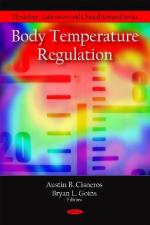|
This section contains 408 words (approx. 2 pages at 300 words per page) |
The human body is able to actively regulate its internal temperature somewhere between 98°F (36.6°C) and 100°F (37.7°C) in spite of various forces that act to cool off the body.
These mechanisms operate through a control region of the brain called hypothalamus, which contains the mechanisms to control the internal temperature and sensors to monitor the body.
The sensors of temperature regulation are on the skin surface and within the body. These all "report" to the hypothalamus.
The body is monitored to gauge the ebb and flow that can occur by various means. Evaporation of liquid draws heat away, as does loss of heat by moving air (convection) and by the radiation of heat from the body surface to the cooler surrounding air. The body can also be heated by a source of radiation. For example, sitting out in the sun on a summer day will warm up the body. Another form of heat loss is via the transfer from the body directly to a solid surface, such as a tile floor. This is heat loss by conduction.
If the internal temperature increases out of the normal range the hypothalamus acts to maximize heat loss by triggering the production of sweat. The evaporation of the sweat cools the body. If this is not sufficient to bring the temperature back to normal, the degree of sweating can be increased. On the other hand, if body temperature drops below the normal range, a number of responses can be triggered by the hypothalamus to minimize heat loss and maximize heat production. Vasoconstriction (shrinkage of the diameter of blood vessels) can occur. This decreases the flow of blood (and so of heat) to the skin. Sweating can be ended. The body can begin to shiver, which heats up the muscles. The secretion of compounds such as norepinephrine, epinephrine, and thryoxine can be stimulated. These compounds also increase heat production.
Temperature regulation also accounts for the temperature of the surrounding air. In cold winter conditions, the body will monitor so as to maintain the proper internal temperature in the core of the body (head and truck). The limbs will be allowed to get cooler before a regulatory alteration is made. In the warm summer months, the zone of the internal temperature that is maintained covers a larger area of the body, excluding only the hands and feet. Body fat provides further temperature regulation via insulation.
|
This section contains 408 words (approx. 2 pages at 300 words per page) |


